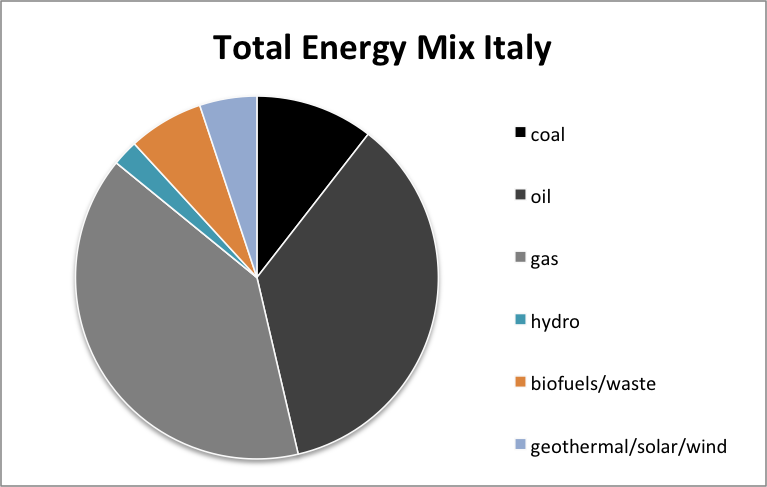Italy – climate and energy statistics
Posted in National and regional statistics on 10/13/2009 02:03 pm by Stephen TindaleSummary
Italy has no significant reserves of fossil fuels and is over 90% dependent on imports for oil, gas and coal. The main sources of oil imports, 1.7 million bbl/day of crude oil in 2006, are Libya, Russia and Saudi Arabia. The primary sources of imported gas are Algeria, Russia and the Netherlands. Historically in Italy, a lack of investment in the Italian electricity sector in the latter years of the 20th century resulted in a reduction in the margin of capacity over demand, which led to severe power cuts in 2003. Since then, capacity and production have both risen, but there are bottlenecks in the transmission and distribution system that restrict delivery to some areas. Even with increased generating capacity, Italy still relies on electricity imports for a significant part of its supply. Consumption is nine per cent higher than annual production and when losses are taken into account, imports are significantly above ten per cent. The Italian grid has 18 interconnections with other countries, including five with France, nine with Switzerland, one with Austria, two with Slovenia and one with Greece. Increasing supply in Italy has largely centred on renewables. As with many countries with no nuclear, Italy has a large gap to fill. However they do have extensive solar and hydro resources that they are exploiting and are also building connections to countries such as Montenegro to benefit from imported hydro power.
Total national greenhouse gas emissions as a percentage of global total, 2004 figures
2%
2012 per capita annual greenhouse gas emissions
6.51 tonnes
Energy used per unit of GDP (compared to USA)
57%
Electricity Mix
Total Energy Mix



